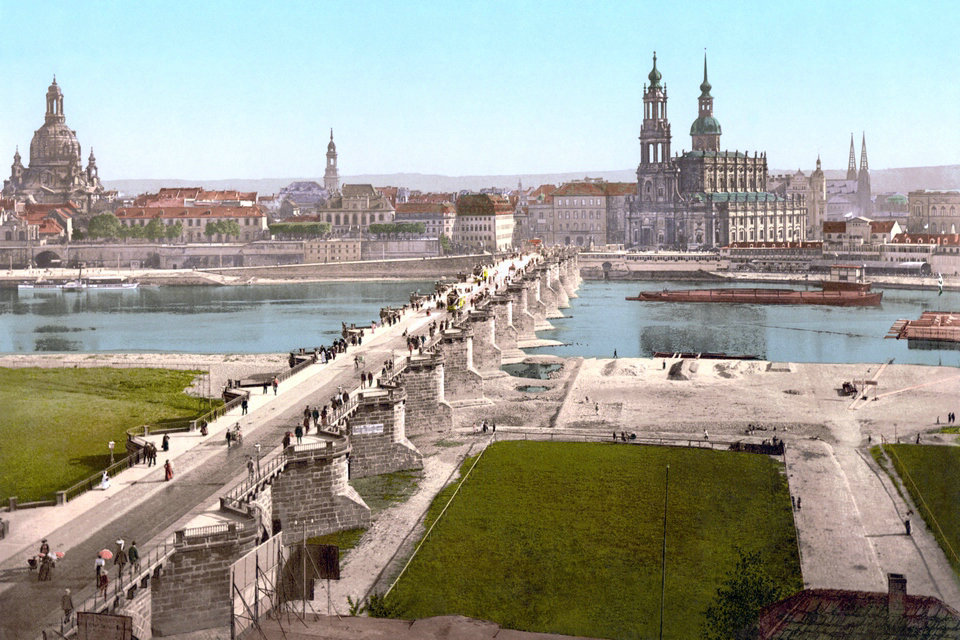

In the visual arts a cityscape (urban landscape) is an artistic representation, such as a painting, drawing, print or photograph, of the physical aspects of a city or urban area. It is the urban equivalent of a landscape. Townscape is roughly synonymous with cityscape, though it implies the same difference in urban size and density (and even modernity) implicit in the difference between the words city and town. In urban design the terms refer to the configuration of built forms and interstitial space.
The term ‘cityscape’ as an indication of a genre in painting originated only around 1800. For that purpose terms were used as ‘konterfeitsel’, which means ‘portrait’, or simply ‘image’. The term ‘landscape’ was also used, certainly in those cases in which the city was depicted from a distance and other parts of the painting seemed to dominate, as is the case with Jacob van Ruisdael’s ‘View of Haarlem’. In cases where the city was pictured closer, people spoke of ‘perspective’, ‘transparency’ or ‘street’. Until the mid-17th century, the genre as a specialism was rare. More familiar were genres such as history pieces, landscapes and still lifes.
Painters of cityscapes did not always deal accurately with reality. Sometimes façades were completely fantasized or made more beautiful than they were, or elements that did not match reality. A well-known example is that of a painting by Jan van der Heyden of an Amsterdam canal with the tower of the Veere church in the background. On the other hand, there are also very detailed and truthful images, such as The Bend of the Herengracht by Gerrit Berckheyde.
History and Development
From the first century A.D. dates a fresco at the Baths of Trajan in Rome depicting a bird’s eye view of an ancient city. In the Middle Ages, cityscapes appeared as a background for portraits and biblical themes. From the 16th up to the 18th century numerous copperplate prints and etchings were made showing cities in bird’s eye view. The function of these prints was to provide a map-like overview.
Numerous copper engravings and etchings were made from cities from the 16th to the 18th century. The function of these prints was to offer a map-like overview. In the mid-17th century, the cityscape emerged as an independent genre in painting. A well-known cityscape is View of Delft by Johannes Vermeer. Cities such as Haarlem, Amsterdam, The Hague and Dordrecht were also subjects for painters.
Halfway the 17th century the cityscape became an independent genre in the Netherlands. In his famous ‘View of Delft’ in 1660-1661 Jan Vermeer painted a quite accurate portrait of the city Delft. Cities like Amsterdam, Haarlem and The Hague also became popular subjects for paintings. Painters from other European countries (i.e. Great Britain, France, Germany) followed the Dutch example. The 18th century was a flourishing period for cityscape painting in Venice (Canaletto, Guardi).
Following the Dutch example, painters in other Western European countries (England, France, Germany) also concentrated on the genre, with the artists mutually influencing each other.
The cityscape in the 18th century in Venice was particularly remarkable.
At the end of the 19th century the impressionists focused on the atmosphere and dynamics of everyday life in the city. Suburban and industrial areas, building sites and railway yards also became subjects for cityscapes. During the 20th century attention became focused on abstract and conceptual art, and thus the production of cityscapes declined. American painter Edward Hopper, who stayed loyal to figurative painting, created intriguing images of the American scene.
During the 20th century, interest is focused on abstract and conceptual art, thereby reducing the production of cityscapes. With a revival of figurative art at the end of the 20th century comes a revaluation of the cityscape. Well-known living cityscape painters are Rackstraw Downes, Antonio López García, and Richard Estes. American artist Yvonne Jacquette has made a specialty of aerial cityscapes. Stephen Wiltshire, a London born artist with autism, is known for his panoramic cityscape renderings composed from memory, usually after taking a short overhead view of the city he is about to draw.
The cityscape or street’s scenes is one of the recurring themes of American hyperrealist painting since the 1970s.
Art genres:
In fine art, the urban landscape is understood analogously as a subject from landscape painting, according to which not the landscape as untouched nature, but the artificial environment of the city is represented. Works of this genre can be further subdivided into
The vedute, which depicts a city panorama, usually with a view of a river, a canal, a square or a street, which draws the view linearly in the depth,
Pictures that focus on the interface between city and country and that combine the two subjects of vedute and landscape, and the urban interior, in which the image is limited to only a few buildings.
The first vedute city panoramas were created on graphics of the late Middle Ages north of the Alps, especially in the Netherlands and Germany. In seventeenth-century Dutch painting, urban landscapes of the second and third types first appeared in the painting. Their triumphal procession in the 18th century, especially the Venetian Vedute.
Famous Cityscape Painters:
Alexander Beggrov
Bernardo Bellotto
Johann Berthelsen
George Hendrik Breitner
Gustave Caillebotte
Canaletto
Sue Averell
Edouard Leon Cortés
John Atkinson Grimshaw
Francesco Guardi
Childe Hassam
Jan van der Heyden
Isaac Israëls
Matthäus Merian
Georgia O’Keeffe
Camille Pissarro
Paul Signac
Alfred Sisley
Jan Vermeer
Brian Whelan
James McNeill Whistler
Guy C. Wiggins
Stephen Wiltshire
Ly Kimlong